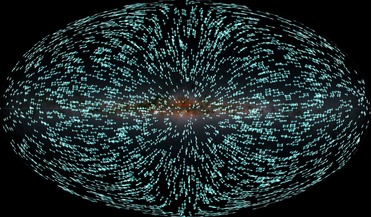 07 December 2020
New Gaia data measures Solar System's acceleration
07 December 2020
New Gaia data measures Solar System's acceleration
... demonstration of the quality of the new data,” says Dresden team member Professor Klioner. “The acceleration measured by Gaia shows a close agreement with theoretical expectations and provides important information on the motion of the Solar System...
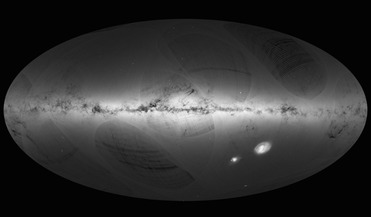 14 September 2016
Gaia's first map hints at big things to come
14 September 2016
Gaia's first map hints at big things to come
...), based on the first year of observations from July 2014 to September 2015, shows the density of stars observed by Gaia in each portion of the sky. Brighter regions indicate denser concentrations of stars, while darker regions correspond to patches...
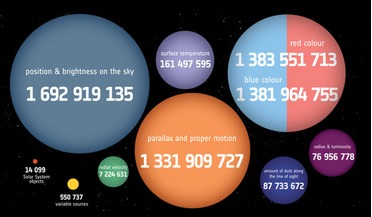 25 April 2018
New Gaia data reveals details on over 1.6 billion stars
25 April 2018
New Gaia data reveals details on over 1.6 billion stars
... within the Universe. Not only that, but animations built from Gaia data allows the positions of stars to be seen in 3D, ... in our Milky Way behave and evolve; data gleaned from Gaia will help to literally reconstruct the whole history of the Milky...
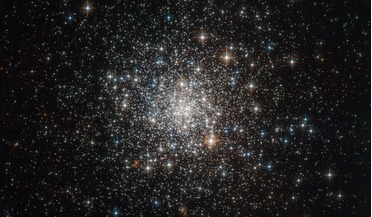 08 March 2019
Astronomers weigh the galaxy with Hubble and Gaia
08 March 2019
Astronomers weigh the galaxy with Hubble and Gaia
... bit chunkier compared to our galactic neighbours. With the help of Gaia, scientists have been able to come up with one of the ... Garching, Germany, lead author of the combined Hubble and Gaia study. That extrapolated figure gives a mass for the Milky...
 02 May 2018
Astronomers spot fastest stars in the galaxy with Gaia
02 May 2018
Astronomers spot fastest stars in the galaxy with Gaia
...Milky Way. Just last week, mission specialists behind ESA’s Gaia satellite announced the unveiling of information on over 1.6 billion stars...of astronomers have scoured the second iteration of the Gaia data and found some likely candidates. From seven ...
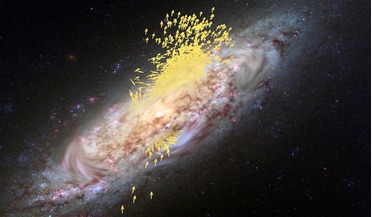 02 November 2018
Scientists unravel the formation history of the Milky Way
02 November 2018
Scientists unravel the formation history of the Milky Way
...after looking at the motions of seven million stars in the Gaia data, found that 30, 000 of them were behaving rather oddly...lead author of the paper published recently in Nature. Although Gaia–Enceladus is expected to have been about ten times smaller...